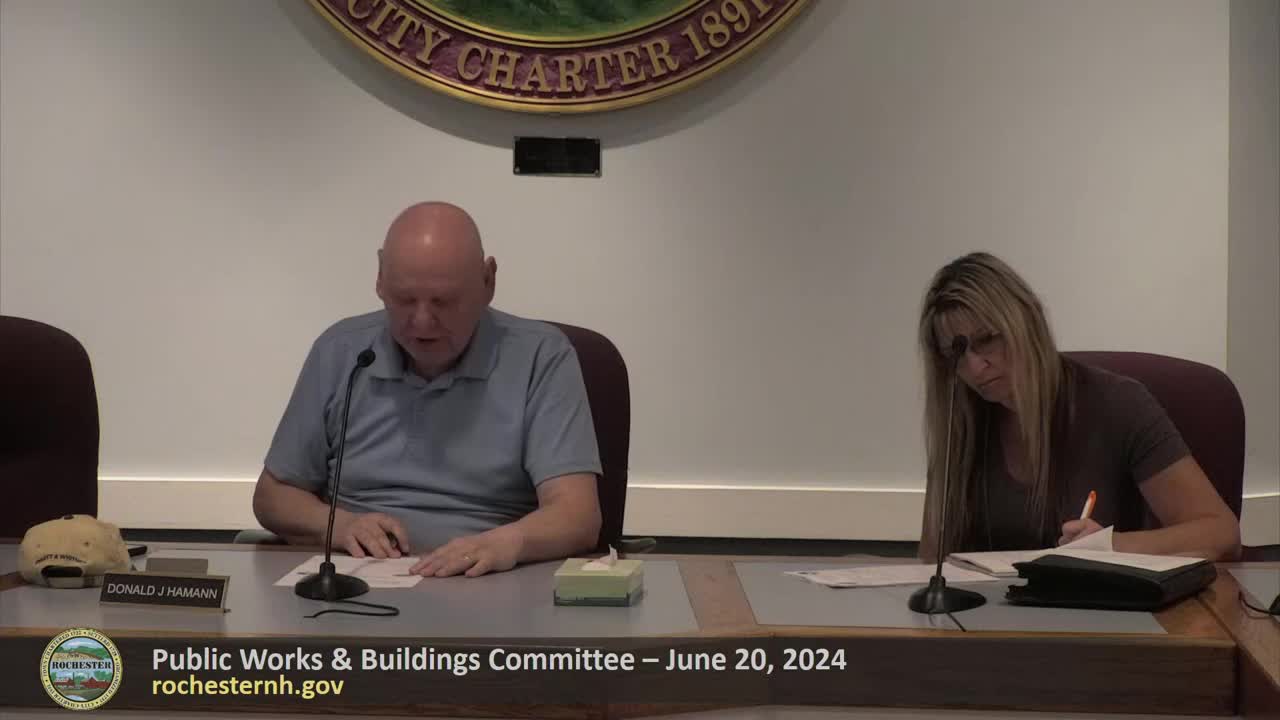Sewer system overhaul aims to tackle pollution crisis
June 20, 2024 | Rochester Boards & Committees, Rochester City , Strafford County, New Hampshire

This article was created by AI summarizing key points discussed. AI makes mistakes, so for full details and context, please refer to the video of the full meeting. Please report any errors so we can fix them. Report an error »

During a recent government meeting, officials provided a comprehensive update on the ongoing Sewer System Master Plan, a critical initiative aimed at minimizing environmental pollutants as mandated by the EPA's National Pollutant Discharge Elimination System (NPDES) permit. The plan, which began in 2021, encompasses the management of approximately 100 miles of sewer mains and 29 pump stations, handling an average flow of 4 million gallons per day.
Key objectives of the master plan include controlling infiltration and inflow (I/I) into the sewer system and assessing necessary infrastructure expansions to accommodate current and future growth. Since the program's inception, over $2 million has been identified for corrective maintenance of pipes and manholes, with significant areas of the city flagged for under-capacity piping.
Tim Labrie, an engineer from Weston & Sampson, detailed various methodologies employed to assess and mitigate I/I issues. These include flow metering, closed-circuit television (CCTV) inspections, and smoke testing, which have collectively revealed substantial inflow and infiltration rates. For instance, peak infiltration was estimated at 1.1 million gallons per day, while inflow was calculated at 2.8 million gallons per day, with 80% of the total inflow occurring in just 43% of the sewer's linear footage.
The meeting highlighted the importance of ongoing investigations, including building inspections that uncovered numerous illicit connections, such as sump pumps and floor drains linked to the sewer system. These findings are crucial for ensuring compliance with state regulations and optimizing treatment costs.
Looking ahead, the city plans to initiate pump station evaluations and continue hydraulic modeling to ensure the sewer system can support anticipated developments. Construction projects targeting identified defects are set to commence in 2025, with immediate rehabilitation efforts for severely corroded pipes already scheduled to begin next month.
This decade-long program represents a significant investment in the city's infrastructure, aimed at safeguarding public health and the environment while preparing for future growth.
Key objectives of the master plan include controlling infiltration and inflow (I/I) into the sewer system and assessing necessary infrastructure expansions to accommodate current and future growth. Since the program's inception, over $2 million has been identified for corrective maintenance of pipes and manholes, with significant areas of the city flagged for under-capacity piping.
Tim Labrie, an engineer from Weston & Sampson, detailed various methodologies employed to assess and mitigate I/I issues. These include flow metering, closed-circuit television (CCTV) inspections, and smoke testing, which have collectively revealed substantial inflow and infiltration rates. For instance, peak infiltration was estimated at 1.1 million gallons per day, while inflow was calculated at 2.8 million gallons per day, with 80% of the total inflow occurring in just 43% of the sewer's linear footage.
The meeting highlighted the importance of ongoing investigations, including building inspections that uncovered numerous illicit connections, such as sump pumps and floor drains linked to the sewer system. These findings are crucial for ensuring compliance with state regulations and optimizing treatment costs.
Looking ahead, the city plans to initiate pump station evaluations and continue hydraulic modeling to ensure the sewer system can support anticipated developments. Construction projects targeting identified defects are set to commence in 2025, with immediate rehabilitation efforts for severely corroded pipes already scheduled to begin next month.
This decade-long program represents a significant investment in the city's infrastructure, aimed at safeguarding public health and the environment while preparing for future growth.
View full meeting
This article is based on a recent meeting—watch the full video and explore the complete transcript for deeper insights into the discussion.
View full meeting
